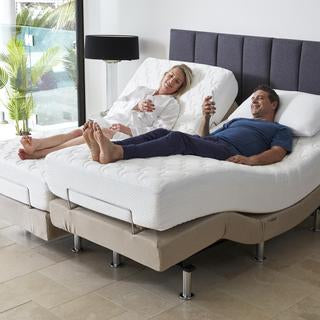Sleepwalking is defined as a parasomnia or abnormality of sleep, where a person walks or performs other complex movements while in the deep sleep phase of the sleep cycle. It has the potential to be extremely dangerous, with some sufferers attempting to drive motor vehicles or engage in other risky behaviours while still asleep.
Causes
Sleep deprivation, sleep apnoea, sedatives, alcohol, stress and certain illnesses, including psychiatric illnesses such as post-traumatic stress disorder, may increase the risk of sleep walking. It is more common in children, who will often outgrow the behaviour.
Causes
Sleep deprivation, sleep apnoea, sedatives, alcohol, stress and certain illnesses, including psychiatric illnesses such as post-traumatic stress disorder, may increase the risk of sleep walking. It is more common in children, who will often outgrow the behaviour.
Solutions
Treating the underlying cause may resolve sleep walking, meaning for some it may be as simple as getting more sleep, avoiding certain medications and improving lifestyle balance.
Treating the underlying cause may resolve sleep walking, meaning for some it may be as simple as getting more sleep, avoiding certain medications and improving lifestyle balance.
Facts
• Approximately 1% of pre-school aged children and 2% of school aged children walk in their sleep at least one night per week
• Approximately 4% of adults sleepwalk
• Men are more likely to become violent in the course of a sleepwalking episode
• Sleepwalking may have a genetic component. Identical twins are more likely to sleepwalk, and a person with a close relative who sleepwalks is 10 times more likely to sleepwalk themselves
• The old myth about not waking a sleep walker is just that: a myth. It can be very dangerous not to wake a sleep walker, as they could harm themselves or others
• Creating a safer sleep environment is essential for sleep walkers. Locking doors and windows and removing access to sharp objects are important precautions
• A sleep walker will normally have their eyes open and fixed in a blank stare
• They will be slow in responding to any questions, or will not respond at all
• Approximately 1% of pre-school aged children and 2% of school aged children walk in their sleep at least one night per week
• Approximately 4% of adults sleepwalk
• Men are more likely to become violent in the course of a sleepwalking episode
• Sleepwalking may have a genetic component. Identical twins are more likely to sleepwalk, and a person with a close relative who sleepwalks is 10 times more likely to sleepwalk themselves
• The old myth about not waking a sleep walker is just that: a myth. It can be very dangerous not to wake a sleep walker, as they could harm themselves or others
• Creating a safer sleep environment is essential for sleep walkers. Locking doors and windows and removing access to sharp objects are important precautions
• A sleep walker will normally have their eyes open and fixed in a blank stare
• They will be slow in responding to any questions, or will not respond at all



